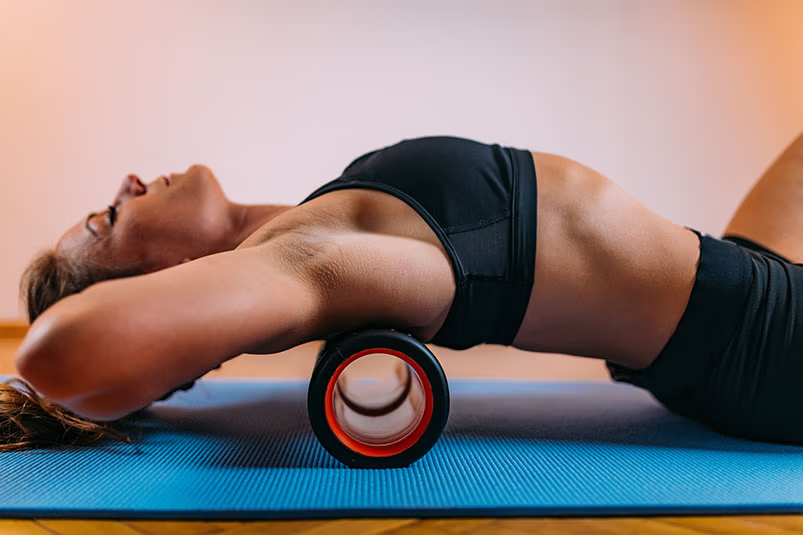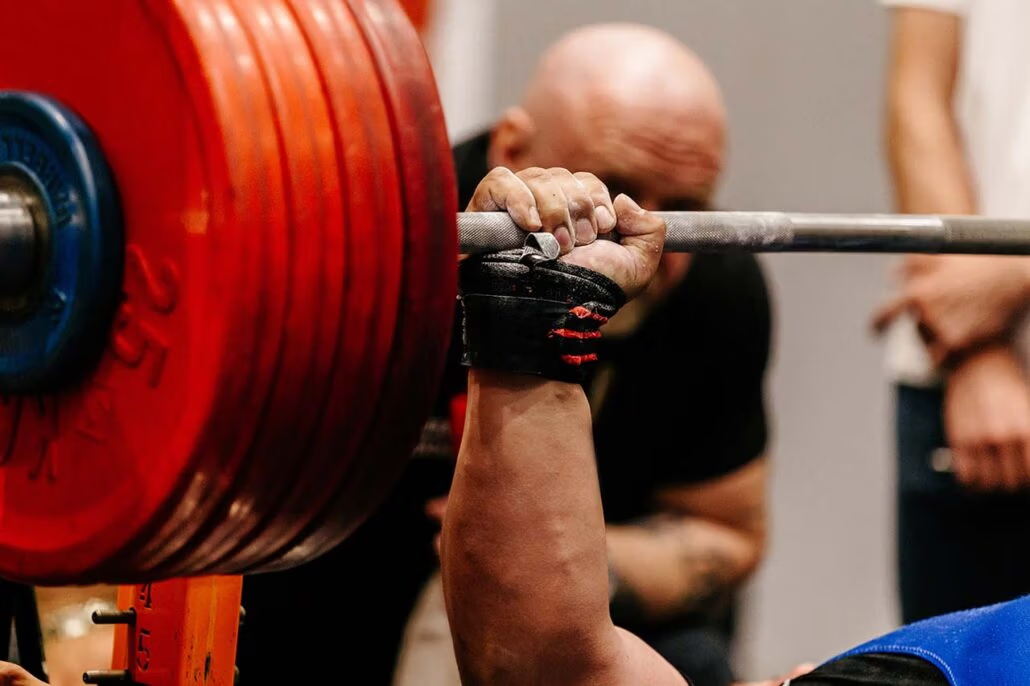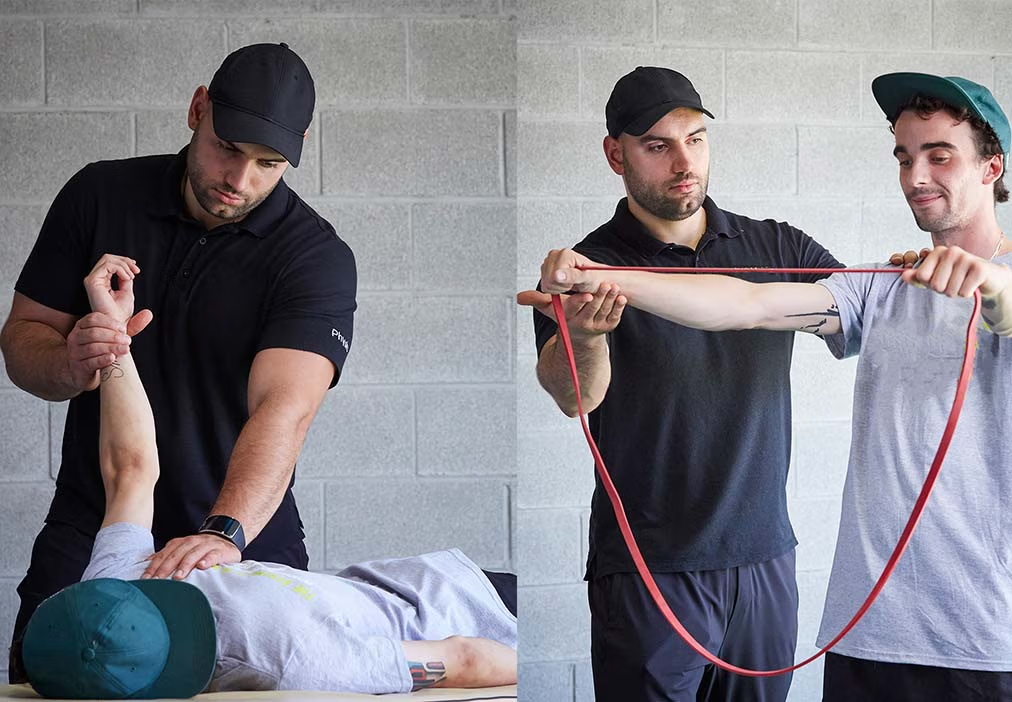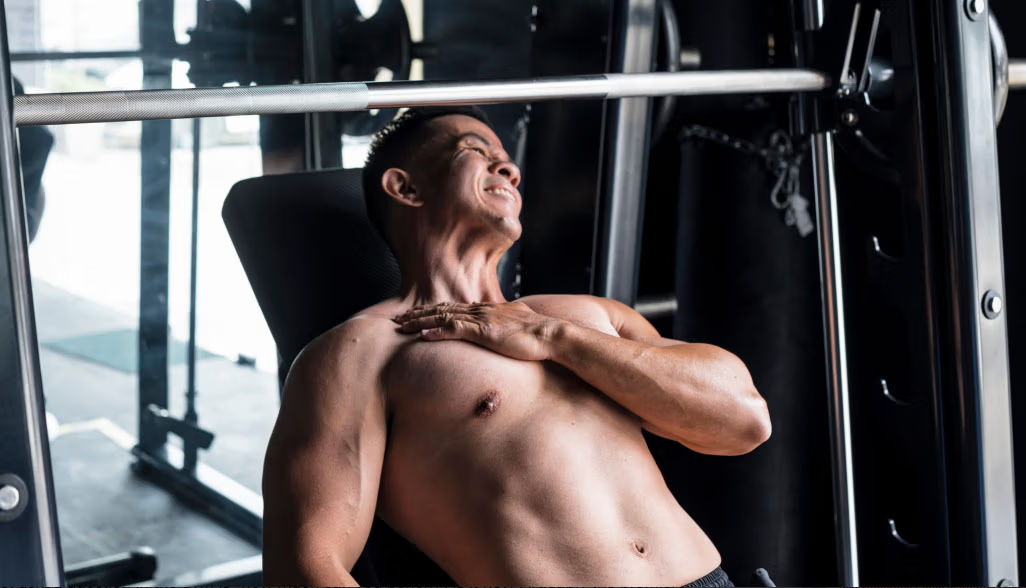What does it mean to bench press without pain? I’ve been thinking about it a lot lately. You see, I’ve trained at the gym for most of my life. Everyone wants the answer to this question. Yet we still go on and lift as heavy as we can, regardless of the pain we experience. The answer is a simple, fool-proof shoulder physiotherapy protocol. I’ll explain, but first let’s talk about why the bench press is on everyone’s mind.
Let’s do a little thought experiment.
The most asked question in the gym is “how much can you bench?”, is it not? Arguably the premiere lift at the gym, the bench press also ranks highest in the “Ego Lift” category. An ego lift involves lifting a ridiculously heavy weight, no matter how much you’ll sacrifice on pain or form. It’s done to fulfill your ego, whether that means proving how strong you are to yourself or others. But I would also be lying to you if I said I don’t thoroughly enjoy a heavy bench press once in a while.
Something’s intriguing about lifting a heavy weight
That being said, as a physiotherapist, I have an obligation. I can help others achieve feats like a heavy bench press without experiencing pain. Shoulder physiotherapy should not be taken lightly. I ate some pretty bad lifts in my youth, and my shoulders suffered. But I used physiotherapy for shoulder pain to get myself out of what most would consider career-ending injuries.
This is why I came up with a shoulder physiotherapy protocol that will fortify and protect you. It solidifies everything from your shoulders and neck, to your upper back and even your hips. This protocol was designed for the gym goers like yourself. My hope is that you put this in your back pocket. Injury prevention is one benefit of this for sure. But watch as your numbers will also go up for your bench press!
What does it mean to bench some serious weight?
I remember doing physiotherapy for shoulder pain after a pretty nasty injury. It was at an athlete clinic known to have treated the likes of Steve Yzerman. I remember coming in with a very painful left shoulder from what seemed to be a subluxation (partial dislocation) and a SLAP lesion. Most of the treatment was focused on exercises to restore the strength in my rotator cuffs. But nothing was said about a preventative measure. One that would prime me for one of my favorite activities; a heavy bench press.
So let’s break down my 6 shoulder physiotherapy principles to fortify your bench press
1) Perform the Warm-up of Champions

Not all cardio machines are created equal. Each has their distinct advantages. However, I have yet to find one that prepares you better for a pressing workout than the elliptical. Yes, you heard me right. It’s one of the only machines that operate with handles, and that’s the magic. What you need to do is take advantage of those handles. For 10-15min, focus the warm-up on pulling and pushing those handles to pump a lot of fresh blood into your chest and back! Find a rhythm that feels great and stick to it.
You’d be surprised what a good warm-up can do for the rest of your workout. Use this time to visualize what you need to do and how you’ll do it. Run through your order of workouts so there’s no time wasted finding machines/equipment when you’re ready. Clear your head of all other things that don’t require your attention. And lastly, turn off the damn TV if the cardio machine has one. There’s no reason why you should be watching CP24 while warming up. Chances are, you’ll be seeing more negativity than anything else. And yes, negativity in your mind will affect your workout.
2) Expand your Ribcage with These Movements

Chest muscles like the pectoralis major and minor attach directly to the rib cage. This attachment means the rib cage needs to move a fair amount when you bench press. Having a tight rib cage while pressing is a recipe for poor lifts and annoying achiness. The missed opportunity I see here in many lifters is astonishing. Spending a bit of time expanding your rib cage in multiple directions can help you avoid countless issues.
Try the following three exercises to do so:
- Thoracic extensions – Use a normal foam roller (no need for spiky bumps). Rest your shoulder blades against it, and keep your knees bent. Interlace your fingers, and support the back of your head. While taking a deep breath in, extend backwards while keeping your butt fixed on the floor. As you return back to the starting position, breathe out. Repeat this for 10-15 reps. There shouldn’t be any pain doing this. In fact, it should feel like a pleasant stretch along your sternum and upper back!
- Dumbbell pullovers – Lay on a straight bench with your head at the edge facing up. Hold a dumbbell using both hands, hovering above your chest. Let it slowly lower behind your head. Keep your elbows relatively straight. Go low enough to feel a decent stretch. Do this while taking a deep breath in. As you bring it back up to the starting position, exhale. Throughout the entire set, make sure you don’t lift your lower back. Pick a weight that is light enough to feel a good pump without too much strain. Aim for 10-15 reps.
- Open-book stretch – Lie sideways on a floor with both hands extended in front of you. Keeping the bottom arm down, swing the top arm away from you. Follow this movement with your head until you have gone as far as you can. After a brief pause, bring your arm and head back to the starting position. The goal is to get your shoulder blade as close to the floor as possible. Again, aim for 10-15 reps each side.
3) Pair Pressing with Pulling

This one’s a game changer. The vast majority of people do exclusively pushing exercises on one day. This needs to be re-imagined. Here’s a thought – what’s to stop someone from performing this type of superset: a bench press followed by a rowing movement? Well, it has never stopped me and I’ll never stop doing it. So why does this work so well?
Think about it in terms of agonist (movers) and antagonist (opposite to movers) muscles. The pressing muscles do the exact opposite of what the pulling muscles do. When you only do pushing exercises, all the pushing muscles get tight during the process. However, if you add a complimentary antagonist movement like a row, you’ll even things out. Your pressing muscles won’t feel as tight. It’ll feel as if your front and back muscles are balanced. Your shoulders will also sit in a better postural position. All of this will surely make your pressing day that much better!
4) Use Water to Your Advantage

For starters, swimming is a fantastic healer of the shoulder. Water is a beautiful medium that offers resistance without stressing your precious joints. But we’re going to take it one step further into what I like to call underwater shoulder physiotherapy exercises. Find a shallow end in a pool, and submerge everything but your head into it. From here, you can do 3 fantastic exercises that will be hard but worth every second.
- Forward-Back Arm Flies – have your arms about 80 degrees in front of you with your elbows extended, and wave them back and forth
- Up-Down Arm Flies – have your arms at your sides with your elbows extended, and wave them up and down from your sides.
- Internal-External Rotations – have your arms about 45 degrees away from your sides with your elbows bent, and rotate them back and forth
Resistance to the motion is created by the drag of the water. This makes it a safe way to fortify your shoulders. It also means that you experience resistance in both directions, which increases your output. Lastly, if you need to increase the intensity, you can do one of 2 things. First, just increase the speed at which you move. Second, hold onto something that will increase the drag of your arms (imagine those plastic dumbbells you see at swimming pools).
5) Spread Heavy Bench Presses

Avoid the mistake of doing a max bench press every time you go to the gym. Like all great things, your body operates in cycles. So should your lifts. Lifting heavy all the time has consequences. You’ll plateau quickly at the very least and injure yourself at the worst. Either way, there’s no benefit. Ask any powerlifting athlete and they’ll tell you the same thing. Instead, space out your heavy lifts. Keep them far enough apart so that you have ample time to recover. You will not lose strength this way.
In the days you need to fill, think about adding some great accessory exercises. If you’re not doing a heavy bench press, think about other ways to build. Dumbbell presses are a good place to start. How about changing the width of the grip you use on the bar? What about Arnold’s favorite exercise, the dip? Perhaps you can change the angle to an incline or decline press? How about some variations of the push-up? Don’t forget the many types of flies you can do with dumbbells, cables, and bands.
6) Find a Shoulder Physiotherapy Expert

Physiotherapy for shoulder pain is a must. There’s so many things a physiotherapist can do to help expedite your recovery and optimize your performance. The shoulder is loaded with joints. A good physiotherapist can find restrictions in any one of them and with joint mobilization techniques, restore mobility. Additionally, elements like muscles and nerves also control movement in the shoulder. Great shoulder physiotherapy protocols will find dysfunction in these elements, and reset them to optimize their performance.
You’ll also be prescribed physiotherapy exercises for shoulder pain. Rotator cuff muscles, periscapular muscles, and other accessory muscles that influence the shoulders are great targets. Having weakness in any of them sets a cascade of responses that can negatively affect your bench press. They need to be addressed with correct strength and mobility workouts that are tailored to the individual using them. Using physiotherapy exercises for shoulder pain can improve recovery post-injury and prevent injuries in the long run.
QUICK RECAP:
1) Use a warm-up that preps you for pressing
2) Expand your ribcage before benching
3) Pair pressing exercises with pulling
4) Use water to your advantage
5) Spread your heavy bench presses
6) Find a shoulder physiotherapy expert

